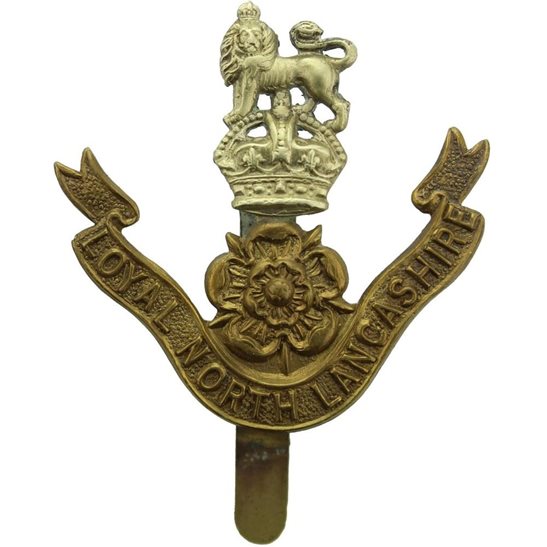Personal Details
Born: 29 September 1893
Family: The only son of John and Sarah Davies of 9 Brooklands, Chester Road, Whitchurch, Shropshire. In 1919 George married Harriet Elizabeth Brown and together they had 4 children – Richard Eric, Maisie M, Derrick Alec and Doreen M.
Civilian Occupation: He was employed as a motorman before enlisting on the 10 December 1915. The 1939 Register shows him as a part time postman.
Residence: George lived at the family home of 9 Brooklands, Chester Road until at least 1919 when he left the army. At the time of the 1939 Register, the family were living at 3 Grindley Brook, Whitchurch, Shropshire.
Died: In December 1967 aged 74.
Military Details
Regiment: 1st Division Loyal North Lancashire Regiment
Rank: Private
Service Number: 34317
Date of Enlistment: 10 December 1915
Date of Discharge: 31 August 1918
Reason for Discharge: No longer physically fit.
Other Information: He was mobilised on the 16 January 1916 and posted to the 9th Division, King’s Shropshire Light Infantry. He was later transferred to the Loyal North Lancashire Regiment. On the 5 June 1917 he suffered a serious injury to his left arm and was transferred to the field hospital. He was subsequently sent to St Patrick’s, England where his left arm was amputated at the shoulder.
George was awarded the Silver War Badge and Campaign Medals (British War Medal, and Victory Medal).

The British War Medal (also known as 'Squeak') was a silver or bronze medal awarded to officers and men of the British and Imperial Forces who either entered a theatre of war or entered service overseas between 5th August 1914 and 11th November 1918 inclusive. This was later extended to services in Russia, Siberia and some other areas in 1919 and 1920. Approximately 6.5 million British War Medals were issued. Approximately 6.4 million of these were the silver versions of this medal. Around 110,000 of a bronze version were issued mainly to Chinese, Maltese and Indian Labour Corps. The front (obv or obverse) of the medal depicts the head of George V. The recipient's service number, rank, name and unit was impressed on the rim.
The Allied Victory Medal (also known as 'Wilfred') was issued by each of the allies. It was decided that each of the allies should each issue their own bronze victory medal with a similar design, similar equivalent wording and identical ribbon. The British medal was designed by W. McMillan. The front depicts a winged classical figure representing victory. Approximately 5.7 million victory medals were issued. Interestingly, eligibility for this medal was more restrictive and not everyone who received the British War Medal ('Squeak') also received the Victory Medal ('Wilfred'). However, in general, all recipients of 'Wilfred' also received 'Squeak' and all recipients of The 1914 Star or The 1914/1915 Star (also known as 'Pip') also received both 'Squeak' and 'Wilfred'. The recipient's service number, rank, name and unit was impressed on the rim.

